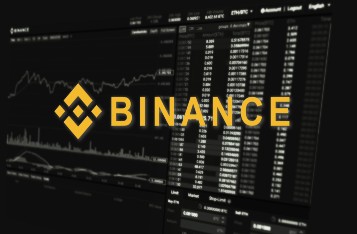From real estate to art, discover how blockchain technology is making traditional assets more accessible, liquid, and transparent.
 Photo by Breno Assis on Unsplash
Photo by Breno Assis on UnsplashReal-world assets (RWAs) are making waves in the Web3 space by bringing physical and traditional financial assets into the digital blockchain ecosystem. Tokenizing these assets bridges the gap between the physical and digital economies, unlocking new ways to trade, invest, and build wealth.
But what are RWAs, and why should you care about tokenized assets? Let’s break it all down.
What Are Real-World Assets (RWAs)?
Real-world assets are physical or traditional financial assets that are tokenized on a blockchain. In simpler terms, tokenization turns things like real estate, art, or stocks into digital tokens that can be bought, sold, or traded on blockchain platforms.
Examples of RWAs:
Real Estate: Fractional ownership of a property tokenized on a blockchain.Commodities: Digital tokens representing physical gold, oil, or other tangible goods.Financial Instruments: Stocks, bonds, or other securities converted into blockchain-based tokens.Collectibles: Luxury items like watches, rare art, or cars represented as NFTs (non-fungible tokens).How Tokenization Works
Tokenization starts by identifying a real-world asset and linking it to a digital token on a blockchain. The token represents ownership or rights to the asset, such as a share in a property or a percentage of revenue from a security.
Asset Identification: A physical or financial asset is chosen for tokenization.Smart Contracts: Blockchain-based smart contracts define the rules, such as ownership rights, payouts, or trading restrictions.Minting Tokens: Tokens are created on a blockchain to represent the asset.Trading & Ownership: These tokens can be sold or traded on platforms, with ownership and transactions recorded transparently on the blockchain.Why RWAs and Tokenization Matter
1. Increased Accessibility
Tokenization lowers the barrier to entry for owning assets. Instead of needing millions to buy an entire property, investors can buy a fraction of a tokenized real estate asset for much less.
Example: A $1 million property could be split into 1,000 tokens, allowing each investor to own a portion for just $1,000.
2. Liquidity
RWAs make traditionally illiquid assets, like real estate or art, more liquid. Tokens can be bought and sold on blockchain marketplaces quickly, without needing long and complex sales processes.
3. Transparency and Security
Blockchain’s transparency ensures all transactions are recorded and verifiable. Smart contracts automate processes, reducing the need for intermediaries and lowering the risk of fraud.
4. Global Market Access
Tokenized assets can be traded globally, opening opportunities for investors and sellers to access a wider market.
Common Challenges with RWAs
While the benefits of RWAs are significant, there are challenges to overcome:
Regulatory Uncertainty: Tokenizing real-world assets often involves navigating complex legal and compliance requirements.Trust in Custodianship: The physical asset backing a token needs to be securely managed by a trusted third party.Market Adoption: RWAs are still a new concept, so widespread adoption is needed to unlock their full potential.Use Cases of RWAs in Action
Real Estate Investing: Platforms like RealT and Lofty.ai allow users to invest in tokenized properties, earning rental income and benefiting from property appreciation.Commodities Trading: Companies like Paxos tokenize gold, letting users trade it as a digital asset with blockchain security.Art and Collectibles: Platforms like Masterworks enable fractional ownership of high-value art pieces through tokenization, making fine art investing more accessible.Financial Products: Tokenized stocks and bonds are being explored to make trading faster, cheaper, and more transparent.Why RWAs Are the Future of Finance
RWAs represent a massive opportunity to merge the traditional financial system with blockchain innovation. By making real-world assets more accessible, liquid, and transparent, tokenization can democratize wealth-building opportunities and create a more inclusive global economy.
As adoption grows, RWAs are poised to transform industries ranging from real estate and finance to art and commodities. Whether you’re an investor, creator, or just curious about Web3, tokenized assets offer a new frontier to explore.
Final Thoughts
Real-world assets are reshaping how we think about ownership, investment, and global finance. By tokenizing physical and traditional assets, Web3 makes them easier to trade, more transparent, and accessible to everyone. However, the journey is just beginning — regulatory clarity, trust, and market education will play key roles in the widespread adoption of RWAs.
If you’re interested in diversifying your portfolio or exploring how Web3 connects with the real world, tokenized assets are worth watching. The future of finance isn’t just digital — it’s tangible, tokenized, and decentralized.
Tokenized Real-World Assets: How Web3 is Revolutionizing Ownership and Investing was originally published in The Capital on Medium, where people are continuing the conversation by highlighting and responding to this story.


 3 weeks ago
3
3 weeks ago
3 









 Bengali (Bangladesh) ·
Bengali (Bangladesh) ·  English (United States) ·
English (United States) ·